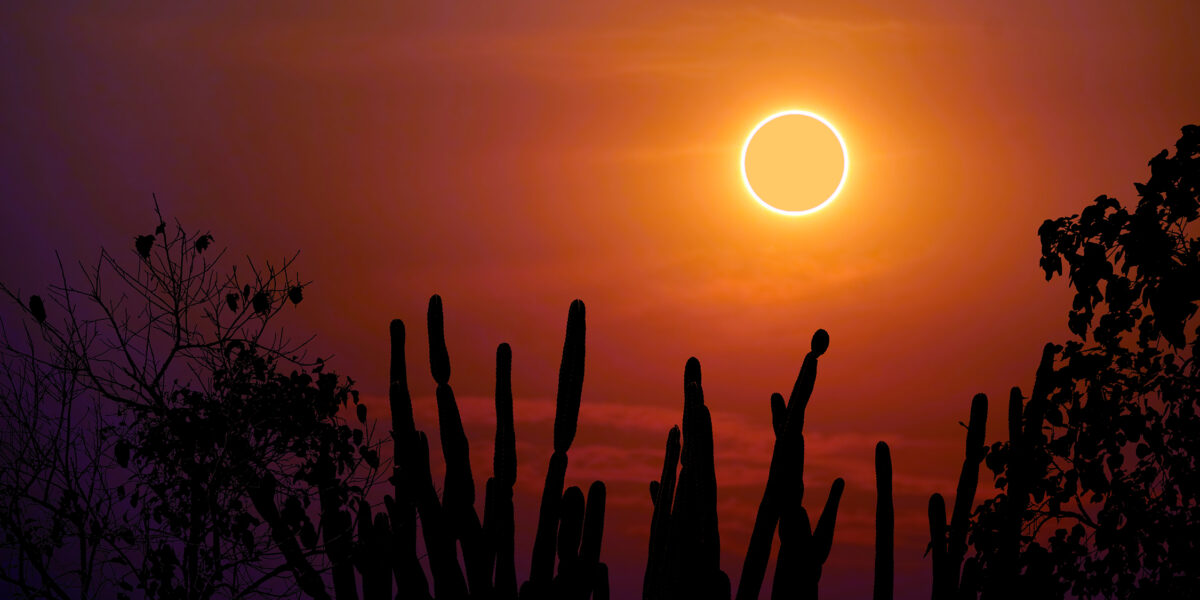
A ‘Ring of Fire’ Solar Eclipse Is Happening This Weekend—Here’s How to See It
It will be visible in several Western states.

People across the country are marking their calendars for Saturday, when an annular solar eclipse is set to darken the morning sky. Annular means “of, relating to, or forming a ring”—which is exactly what the moon will do as it moves over the sun. If you’re in the eclipse’s path, you should be able to see a “ring” around the moon for up to 5 minutes.
This “ring of fire” will start in Oregon, and then reach Texas before passing through Central and South America. While people across the United States and beyond will experience some percentage of annularity, the following cities are where the eclipse will start in each Western state along its path, according to NASA:
Eugene, Oregon
Start of eclipse: 8:06 a.m. PST
Maximum annularity: 9:18 a.m. PST
Alturas, California
Start of eclipse: 8:05 a.m. PST
Maximum annularity: 9:20 a.m. PST
Battle Mountain, Nevada
Start of eclipse: 8:06 a.m. PST
Maximum annularity: 9:23 a.m. PST
Richfield, Utah
Start of eclipse: 9:09 a.m. MDT
Maximum annularity: 10:28 a.m. MDT
Albuquerque, New Mexico
Start of eclipse: 9:13 a.m. MDT
Maximum annularity: 10:35 a.m. MDT
After it passes through New Mexico, the eclipse’s last U.S. stop is Texas at 12:03 p.m. CDT. Outside of the direct path, viewers in Washington, Idaho, Montana, Wyoming, Colorado, and Arizona will be able to see a partial eclipse.
This is a rare event, since the last time the United States had an annular eclipse was back in 2012. And after next year’s total solar eclipse (when the moon will completely block the sun), we won’t see another solar eclipse until 2024.
